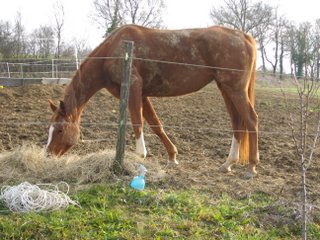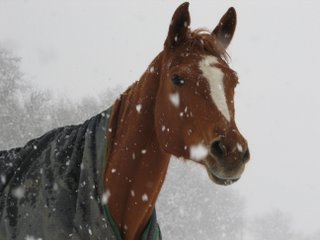Lutine's Hooves: January 06




The photos above show Lutine's hooves how they were in January when I first got her. From left to right they show: sole on off side front hoof, sole on near side front hoof, heels on off side front hoof, and front off side hoof from the side. I couldn't figure out why the vet couldn't understand why she was lame... maybe I'd missed something in the translation from the owner.
There were lots of things I could see straight off: looking at the underneath of the hoof the frogs were way too small and were contracted, there was flared hoof wall, white line infection, seriously overlaid bars with infection nestling underneath, signs of old abscesses (apparently she abscessed with every change of shoes). From the sides - well, where do you start? The hoof was basically a cylinder shape and it should not have been. The heels are far too high (and they were imbalanced from side to side, the hoof wall was uneven in its thickness, and all four hooves had signs of extensive bruising in the walls. The owner again said 'we don't know why she has those bruises but she always had them and we can't get rid of them'. As well as all this, when I felt for the lateral cartileges, I could only just about place my thumb between them meaning they too were hugely squashed in on themselves inside the hoof.
I trimmed her hooves the week before she came to live with us, basically lowering the overall heel height by about 4mm to start, removing any overlaid bar where it was possible to do so without cutting into the sole and by removing some of the flared hoof wall and finishing with a bevelled edge. Then I gave her old owner (they had given her to me by this point) a bottle of boarx solution and asked her to scrub Lutine's feet with this when she came in from the field in the evening. From then on, the basic trimming approach has been the same: removing overgrowth where it's possible to do so without making Lutine's foot sore, re-establishing balance as far as possible and keeping any infection at bay.
On top of that, I asked the old owners to change her diet while she was there. Until then she'd been given a traditional French sports horse diet: about 80% cereals (mostly barley) and a small amount of hay overnight in her stable (maybe 3 or 4 kg per day). I believed, at the time, that this was going to be an important part of her rehabilitation but I had no idea just how important this would prove!



